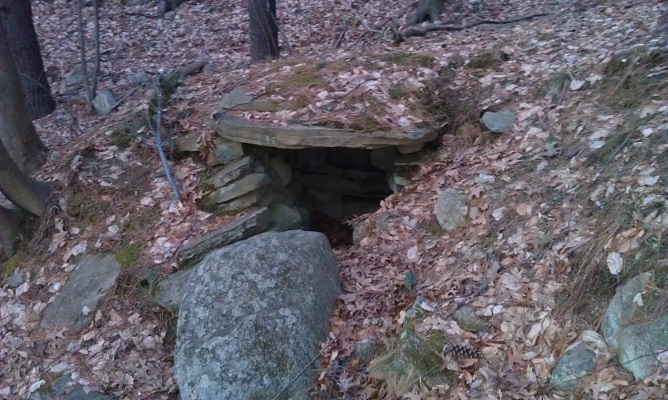
The Stone Chambers of Putnam County, New York
Over the years stone chambers have been dismissed as nothing more than farmers’ root cellars. Why do some have long narrow entrance passages? In some, the light of the rising or setting sun creeps in illuminating the rear wall only during the summer or winter solstice. Many chambers are located near rivers or streams, while others are clustered in one area.
Yet they are important examples of antiquities in New England. They are conspicuous as constructions and yet little or nothing is known about their history. The chambers are widespread, occurring in densities from as many as 200 chambers in Putnam County New York, to as few as two or three in the state of Maine. As can be seen in the photos section, two or three architectural styles are quite common: flat fronted, corridor fronted, and underground. Other chambers may not fit any of these patterns.
Some facts are:
There are three extreme views as to the nature of Stone Chambers. One is the conventional view that they are just colonial period root cellars. A second is the speculative view that they were built as an extension of the same Neolithic culture that built passage tombs and "beehives" in Ireland. A third is that the chambers are part of Native American spirituality, a New England version of the Kiva. There is enough variety among the chambers to support any one or all of these views.
Stone chambers are fragile and are being destroyed at a steady rate.
The 1997 NEARA spring meeting was held in nearby Woodstock, Connecticut. The owner gave me permission to show this classic, oval-shaped, drywall chamber as part of our traditional Sunday field trip. Approximately 30 fellow members gathered around as I opened the door. Unbeknownst to me, the broken lintel had sagged more and was only being supported by the door and frame. Creak, crack, crunch! As the door opened, the two lintel halves plummeted to the ground and the entire left supporting wall crumbled to my feet . I turned to see the crowd gasping in unison. It was truly a preservationist’s nightmare.
Here is the story of disaster to delight as the chamber was restored to its original condition.
Read the full article (PDF): FROM DISASTER TO DELIGHT. By James Egan, NEARA Journal , Vol. 36 No 1, Summer 2002